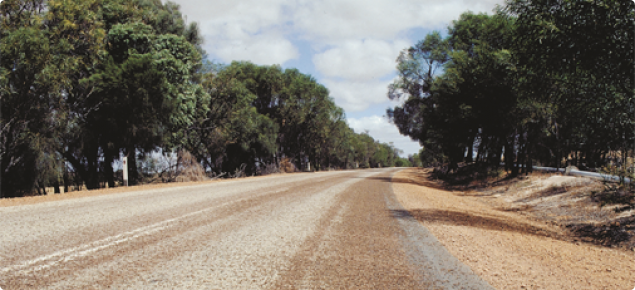Driving safely
Locust swarms can obstruct your vision when driving so it is important that you are prepared.
Locusts may also swarm at night, so it is important to make sure you keep your windscreen and headlights clean.
When driving, be aware that locust swarms can:
- reduce your ability to see the road and oncoming traffic
- block your vehicle's radiator, causing overheating
To prepare for your trip and a possible encounter with locusts, you should:
- add some specially formulated insect cleaning agent to the windscreen washer system (available at larger supermarkets, auto accessory outlets and service stations)
- consider attaching an insect screen (not green in colour) to your external radiator air-inlet for extra protection
- pack a bag with spare water and extra insect cleaning agent and cloths/rags/brush
Driving through a swarm of locusts
If you are having some trouble seeing the road because of the locusts:
- Slow down - gradually reduce your speed and continue driving carefully
- Turn on your headlights - to alert oncoming traffic of your presence
- Be aware that traffic coming from the opposite direction will also have reduced visibility
- Use your windscreen wipers to clear locusts from your windscreen - well-fed locusts leave a residue of body parts and fat at the point of impact
- Monitor temperature gauge on your dashboard – dead locusts can reduce air flow to an engine and cause overheating
- Pull over and use cleaning agent and cloths/rags to remove residue from windscreen, wipers headlights and radiator air-inlet
If you are having a lot of trouble seeing the road because of the locusts:
- Slow down - gradually reduce your speed and stop only where it is safe to do so
- Turn off your engine - to avoid overheating
- Turn on your headlights - to alert oncoming traffic of your presence
- Remain in your car until swarm subsides
- When visibility improves, apply water and insect cleaning agent and use cloths/rags to remove locust residue from windscreen, wipers headlights and radiator air-inlet
- Remain alert to danger of oncoming traffic
- Resume driving carefully
Information on the locust situation and locust biology and management can be found at agric.wa.gov.au/locusts
Report locust activity or for more information contact the Department of Agriculture and Food’s Pest and Disease Information Service on 1800 084 881.
Information courtesy of Agriculture Victoria.

